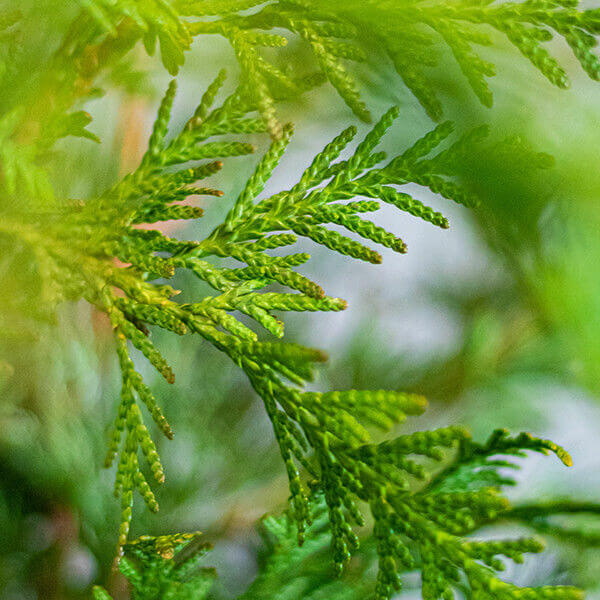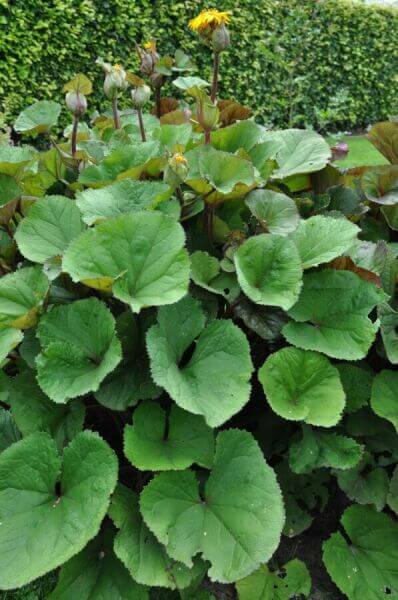Best Hedging Plants For Soft Borders
Best Hedging Plants For Soft Borders
Blog Article
Best Hedging Plants For Autumn Hedges
Boost your garden's attraction with rich hedge varieties such as Yew (Taxus), Thuja, Laurel, Photinia, and Bamboo, commemorated for their structural integrity and ecological advantages.
Yew and Thuja provide evergreen protection and winter durability, while Laurel uses quick growth and broad, aromatic leaves.
Photinia includes seasonal appeal with its lively red foliage, and Bamboo lends a low-maintenance, peaceful atmosphere.
These hedges improve air quality, decrease sound, and develop tranquil, private spaces.
Correct planting, spacing, and maintenance guarantee energetic development and ecological harmony.
Explore how these lavish varieties can elevate your garden's appeal and wellness.
Secret Takeaways
Transform Your Garden With Lush Hedge Varieties
- Select Yew for its dense, evergreen development and unequaled longevity.
- Choose Laurel for its fast development and broad leaves, making sure fast personal privacy.
- Choose Photinia for its vibrant seasonal foliage, which turns a striking dark red.
- Utilize Bamboo for a low-maintenance, winter-hardy hedge with visual appeal.
- Space plants 2-3 per meter and prune frequently for ideal development and health.
Popular Hedge Plants
When changing a garden with lush hedge varieties, it's vital to consider popular hedge plants such as Yew, Thuja, Laurel, and Photinia due to their distinct qualities and advantages.
Yew (Taxus) is extremely esteemed for its longevity and dense, green growth, making it a prime choice for sustaining landscapes.
Thuja is kept in mind for its evergreen foliage and robust winter season strength.
Photinia includes seasonal vibrancy with red leaves that darken with time, developing dynamic visual appeal.
Laurel offers rapid growth and aromatic, broad leaves, perfect for fast personal privacy.
Furthermore, Bamboo is an exceptional option for ambiance, providing a low-maintenance, winter-hardy choice that improves the garden's aesthetic with its elegant, swaying canes.
These choices deal with a variety of horticultural needs and choices.
Advantages of Garden Hedges
Garden hedges offer a wide range of benefits, making them a valuable addition to any landscape. These natural barriers are cost-efficient to carry out and offer significant wind defense, boosting air flow and contributing to sound decrease. The dense foliage of hedges like Thuja and Beech ensures personal privacy by blocking visibility, developing a remote and serene environment.
Hedges also play an essential function in microclimate policy, providing a steady environment that fosters plant development and reduces temperature level fluctuations. Their complex leaf structures filter pollutants, enhancing air quality and contributing to a much healthier garden environment.
Furthermore, hedges excel in noise decrease, absorbing and deflecting acoustic waves to lower ambient noise levels. This double functionality of supplying both visual and acoustic personal privacy enhances the total tranquility and aesthetic appeal of any garden.
Planting and Upkeep Tips
For a successful hedge, careful preparation of the planting location is important. Make sure the soil has proper pH and drain to support strong root development.
Space the plants properly for the selected types. Water the hedge frequently during its preliminary growth phase, changing as required with seasonal modifications.
Implement a methodical bug control and disease prevention method, utilizing organic or chemical treatments when needed. Frequently inspect for aphids, mites, and fungal infections.
Apply mulch to keep wetness and reduce weeds. Seasonal pruning promotes thick development and air blood circulation, essential for plant health.
Following these guidelines will help you cultivate a dynamic, properly maintained hedge that boosts the beauty of your garden.
Spacing and Trimming Guidelines
Spacing and Trimming Guidelines
Proper spacing and trimming are essential for cultivating healthy, visually appealing hedges. Sufficient spacing guarantees each plant receives sufficient nutrients, light, and airflow.
Follow these guidelines for ideal hedge maintenance:
- Spacing: Position hedge plants 2-3 plants per meter to encourage robust growth.
- Pruning Techniques: Regular pruning is essential for maintaining desired hedge height and shape. Cut brand-new development in summertime and cut back older wood during winter.
- Seasonal Care: Change cutting techniques and schedules according to seasonal requirements to guarantee plant health.
- Hedge Height: Routinely monitor and cut to keep the preferred hedge height and accomplish uniform aesthetics.
Sticking to these steps will guarantee your hedge prospers, improving both the appeal and functionality of your garden.
Picking the Right Hedge
Selecting the Right Hedge
Selecting the proper hedge includes assessing elements such as fully grown height, foliage density, and environmental resilience. Effective hedge plant choice needs comprehending each types' development qualities and site-specific versatility.
For example, Yew (Taxus) offers excellent durability and thick development, while Thuja is noteworthy for its winter resilience. In addition, considering upkeep requirements is crucial; fast-growing types like Laurel or Privet demand routine trimming, whereas low-maintenance options like Bamboo or Ivy might be preferable for those looking for very little upkeep.
Environmental aspects such as soil type, light accessibility, and wetness conditions need to also assist the selection procedure. This careful method makes sure the selected hedges will grow, providing both visual and functional benefits to the garden landscape.
Delivery and Planting Suggestions
To ensure your hedge plants prosper, they need to be delivered by specialized couriers and planted promptly upon arrival.
Follow these important actions for effective planting:
- Soil Preparation: Enrich the soil with organic matter to enhance drain and nutrient material.
- Planting Depth: Create a trench twice the width and equal to the depth of the root ball.
- Watering Strategies: Water completely after planting, keeping the soil consistently moist but not filled.
- Mulching: Use a layer of mulch to maintain moisture and suppress weeds.
Client Support and Service
Provided the vital function of prompt help in horticultural pursuits, our customer support team is available six days a week through telephone, email, and social media to provide professional recommendations and quickly attend to any issues. Their devotion to fast action times makes sure consumer fulfillment by solving questions connected to plant health, optimum planting approaches, and upkeep schedules.

Accessibility
-------------------
Within 24 hours
This detailed assistance system, enhanced by a stellar 9.3/ 10 customer score, highlights our commitment to improving the gardening experience for each customer.
Regularly Asked Concerns
The Length Of Time Does It Consider Hedge Plants to Develop?
Hedge plants usually need one to 3 years to end up being totally developed, with the specific period differing by types and growing conditions.
Efficient care during this crucial period is important for robust growth. Consistent watering, vigilant weed control, and proper fertilizer application are essential in promoting strong root advancement.
For instance, fast-growing species like Laurel may establish faster, while slower-growing ranges such as Yew may take longer. Thorough upkeep speeds up the establishment process, leading to thick and healthy hedges.
What Are the very best Hedge Plants for Privacy?
The concern of the very best hedge plants for privacy involves examining evergreen and deciduous alternatives.
Evergreen hedges like Thuja, Laurel, and Cypress offer year-round coverage, ensuring constant privacy.
In contrast, deciduous hedges such as Beech use seasonal privacy, shedding leaves in colder months.
Secret maintenance tips for personal privacy hedges include routine cutting, fertilizing in spring, and proper spacing-- normally 2 to 3 plants per meter.
Furthermore, consistent watering and thorough weed removal are crucial for promoting healthy, thick growth.
Can Hedge Plants Draw In Wildlife to My Garden?
Yes, hedge plants can attract wildlife to your garden by supplying important advantages like shelter, food, and nesting sites, therefore improving local biodiversity. Yew, holly, and laurel are exceptional for drawing in birds, while ivy supports a range of bugs.
Nevertheless, it is essential to keep in mind that there are some drawbacks, such as increased upkeep to manage insects and routine upkeep. Thoroughly selecting and preserving hedge ranges can help balance these advantages and drawbacks, ultimately promoting a lively and sustainable environment in your garden.
Exist Any Flowering Hedge Plants Available?
Yes, there are flowering hedge plants offered that can boost the beauty of your garden.
For example, Elaeagnus, likewise understood as Olive Willow, produces fragrant white flowers in the fall, adding a touch of beauty.
Photinia, another popular option, showcases lively red leaves that mature into a rich green, producing a vibrant visual result throughout the seasons.
To make sure these plants thrive, it's vital to practice correct pruning strategies and seasonal upkeep, such as trimming new growth in the summertime and cutting back in the winter season.
These procedures will assist keep the health and visual appeal of your blooming hedges.
How Do I Prevent Pests in My Hedge Plants?
To prevent pests in hedge plants, employ natural pest control methods and maintain proper Additional hints hedge care. Introduce advantageous bugs like ladybugs, which take advantage of hazardous insects, to create a balanced ecosystem.
Regularly inspect your hedges for signs of infestation and promptly remove any afflicted parts to avoid the spread. Make sure the health of your hedges by using balanced fertilizers and providing adequate water.
Make use of mulching to maintain soil wetness and appropriate spacing to decrease plant stress and promote robust development. These practices jointly help in reducing pest concerns and keeping a healthy hedge.
Conclusion
In essence, selecting the right hedge varieties such as Yew, Thuja, and Laurel can change any garden into a relaxing haven. These plants provide year-round plant, improve aesthetic appeal, and deal practical advantages like sound reduction and wind defense.
Appropriate planting techniques, precise spacing, consistent watering, and seasonal trimming are essential for ideal growth.
Reliable shipment services and expert consumer support make sure a smooth experience from purchase to planting, making it simpler than ever to raise your outdoor area.
Garden hedges offer a plethora of benefits, making them an important addition to any landscape. These natural barriers are affordable to carry out and offer significant wind security, boosting air flow and contributing to sound reduction. The thick foliage of hedges like Thuja and Beech ensures privacy by blocking visibility, producing a serene and secluded environment.

Pruning Strategies: Routine pruning is vital for preserving desired hedge height and shape. Cut brand-new growth in summer season and cut back older wood throughout winter.
Report this page